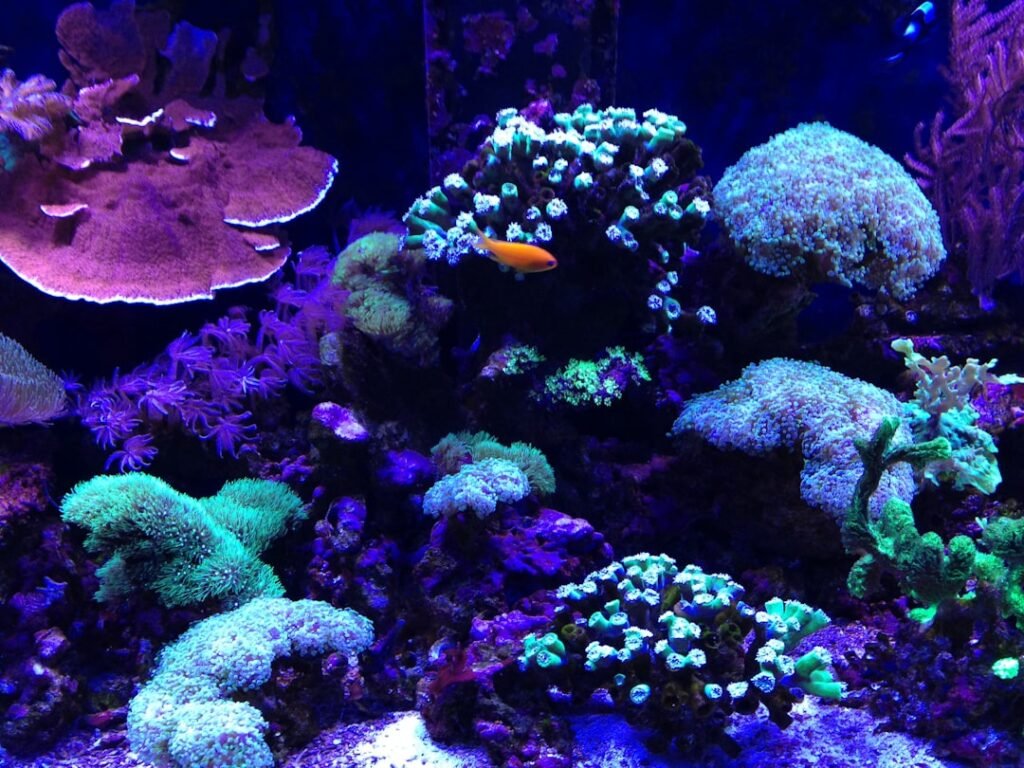The ocean depths around continue to reveal remarkable secrets that challenge our understanding of marine life. Recent scientific discoveries have unveiled fascinating coral ecosystems and marine creatures that blur the lines between rocks and living organisms. These findings highlight the extraordinary biodiversity thriving in Caribbean waters and offer new hope for marine conservation efforts.
What makes these discoveries particularly intriguing is how these organisms masterfully disguise themselves as inanimate objects while maintaining complex living systems. The research reveals intricate relationships between seemingly static marine formations and the vibrant ecosystems they support, raising questions about how much marine life remains undiscovered in our oceans.
The Deep-Sea Discovery That Changed Everything

Scientists have reported finding previously unknown reefs off Puerto Rico’s coast and sits at depths between one hundred to three hundred and thirty feet beneath the surface. These mesophotic ecosystems represent the deepest light-dependent coral formations, making them incredibly difficult to study until recent advances in diving technology.
The reef teems with bright-turquoise sea squirts, colorful sponges, various fish, and a multitude of marine life. Researchers believe this thriving ecosystem might help replenish the island’s depleted shallow reefs. The discovery offers a glimpse into how marine life adapts to extreme conditions in ways that often make organisms appear more like geological formations than living creatures.
Corals That Look Like Ancient Stones

Corals may appear like plants or rocks, but they are actually animals that take root on the ocean floor. Scientists describe them as small jellyfish glued inside little rock caves. This remarkable similarity to rocks makes them nearly indistinguishable from their surroundings to untrained observers.
Their small, soft bodies called polyps build strong calcium carbonate skeletons, similar to how clams grow their shells. These structures can survive for thousands of years, creating the illusion of permanent rock formations while actually housing living, breathing organisms.
The Mystery of Moving Marine Formations

Carrier shell snails get their name because they literally carry other objects, including coral pieces, shells, and stones on their backs. The snails grab objects with their muscular foot and hold them while their mantle secretes sticky substances to attach items to their shells, continuously adding more as they grow.
These remarkable creatures transform themselves into what appears to be moving rock formations. The attached rocks and organisms serve as excellent camouflage and protection from predators, while the snails cement these materials to their shells as they develop. To observers, they appear as animated geological specimens crawling across the seafloor.
Ancient Survivors Hidden in Plain Sight

At certain Puerto Rican reefs, scientists have discovered elkhorn coral that has reportedly survived since pre-Hispanic times, potentially due to genetic variations that make it resistant to bleaching. These ancient formations appear as weathered underwater rocks but represent some of the Caribbean’s most resilient marine life.
While coral mortality reached devastating levels throughout Puerto Rico, some reefs have shown greater resilience with lower mortality rates. Researchers found evidence through zooarchaeological analyses that these corals survived similar temperature conditions centuries ago. Their rock-like appearance masks an incredible evolutionary adaptation that has allowed survival through multiple climate changes.
Sponges Masquerading as Mineral Formations

Scientists discovered bright blue ascidians known as sea squirts thriving at one hundred sixty-four feet among corals, light green algae, and red, orange, and brown sponges. The diverse ecosystem includes various corals, colorful sponges, and fish including groupers, snappers, and reef sharks.
These sponges often develop textured, porous surfaces that closely resemble volcanic rock or coral limestone. Their ability to filter massive amounts of water while remaining completely stationary creates the perfect illusion of geological formations, yet they represent some of the ocean’s most sophisticated filtering systems.
Rock Gardens That Breathe Underwater

Coral gardens thrive up to twenty thousand feet below the ocean’s surface, with scientists discovering nearly as many deep-sea coral species as shallow-water varieties. These formations create underwater landscapes that mirror terrestrial rock gardens but pulse with living activity.
Black corals encountered during expeditions can live thousands of years and provide habitat for economically important species. Unlike shallow corals, deep-sea varieties don’t rely on sunlight but obtain energy by trapping tiny organisms in passing currents. Their dark, branching structures appear remarkably similar to charred driftwood or blackened stone formations.
The Illusion of Immobility

Corals resemble miniature sea anemones or upside-down jellyfish with short tentacles that create a fuzzy appearance when extended. Each coral formation consists of hundreds or thousands of tiny polyps living side by side. The coral’s tentacles can retract into the hard skeleton when disturbed, making live corals appear like rocks.
This remarkable ability to switch between animated and stone-like appearances helps explain why early naturalists struggled to classify these organisms. The transformation happens so quickly that observers often miss the transition between living creature and apparent geological specimen.
Camouflaged Predators Among the Rocks

Scorpion fish have appeared in Puerto Rico’s reefs, relying heavily on camouflage that makes them nearly indistinguishable from their surroundings. Their camouflage abilities are so effective that they blend perfectly with rocky surfaces.
These fish develop skin patterns and textures that mirror the exact coloration and surface features of coral rocks and stone formations. Their ability to remain motionless for extended periods while appearing identical to their rocky environment makes them nearly impossible to detect until they strike.
Living Stones That Filter Oceans

Corals build up slowly over time from calcium carbonate secretions of small polyps. While coral reefs cover less than one percent of the ocean floor, scientists estimate that nearly twenty-five percent of all ocean species spend part of their lives in or near them.
These formations process enormous amounts of seawater daily, extracting nutrients and filtering particles while maintaining the appearance of static rock formations. Surveys documented at least sixty-five species of stony corals, one hundred twelve species of soft corals, and two hundred forty-two species of reef fish on Puerto Rico’s reefs, all supported by structures that casual observers mistake for lifeless stone.
The Science Behind the Stone Facade

Inside coral polyps live tiny one-celled algae called zooxanthellae that contain chlorophyll and convert sunlight into sugar like plants. These algae produce food and oxygen for the polyp in exchange for a safe home. This symbiotic relationship creates complex living systems within formations that appear completely mineral.
The partnership between animal and plant creates structures stronger than many rocks while maintaining biological functions. This dual nature explains why these organisms so successfully mimic geological formations while performing sophisticated biological processes that sustain entire marine ecosystems.
Future Implications for Marine Discovery

Scientists estimate between seven hundred thousand and one million species exist in the ocean, with roughly two-thirds yet to be discovered or officially described. Puerto Rico’s waters continue revealing organisms that challenge traditional classifications between living creatures and geological formations.
Puerto Rico’s waters represent places extremely rich in biodiversity and very important to deep-sea life, making them ripe for exploration. Recent discoveries include new species and thousand-year-old deep-sea corals that are truly amazing. These findings suggest countless more rock-like organisms await discovery in unexplored ocean depths.
The represent just the beginning of understanding how marine life adapts to extreme environments. These discoveries challenge our perceptions about the boundary between living and non-living matter in ocean ecosystems. As technology advances and exploration continues, scientists expect to uncover even more remarkable organisms that blur these distinctions.
The implications extend beyond scientific curiosity to practical conservation efforts. Understanding how these organisms survive and thrive in seemingly impossible conditions could provide insights for protecting marine ecosystems facing climate change. What other secrets do you think the ocean depths are hiding from us?

Jan loves Wildlife and Animals and is one of the founders of Animals Around The Globe. He holds an MSc in Finance & Economics and is a passionate PADI Open Water Diver. His favorite animals are Mountain Gorillas, Tigers, and Great White Sharks. He lived in South Africa, Germany, the USA, Ireland, Italy, China, and Australia. Before AATG, Jan worked for Google, Axel Springer, BMW and others.



